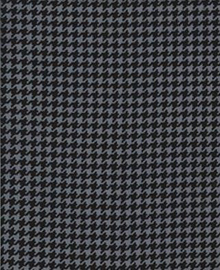Here is a quick guide to assist the identification of suit patterns - Essential information to any stylish or metro-sexual man.
Twill (or block colour patterns)
 |
| Gabardine |
Fabric is weaved with a pattern of diagonal parallel ribs. Twills generally drape well and are a widely accepted and popular choice for all types of suits. Examples of twill fabrics are gabardine and tweed.Solid block fabrics are usually made in twill pattern, especially gabardine.
Pinstripe
Regularly spaced, parallel stripes of a lighter/variant colour woven into the fabric. Stripes vary in size from thick to thin, and may be widely or tightly spaced. Pinstripes are a very popular selection for all types of suits and jackets, especially for business suits. Chalk stripes are often bolder, more widely spaced white stripes on a dark fabric background.
Glen Check or Prince of Wales Check
A simple, elegant and popular pattern that uses alternating small checks within larger checks often involving a small amount of Houndstooth alongside the Checks. This pattern is equally as good for a sports jackets as it is for a business suit. A good all rounder.
Herringbone
Uses alternate diagonal lines making a distinct V pattern across the fabric. The herringbone pattern is very popular and can be used for almost any type of suit or jacket.
Houndstooth
It is a dual-tone pattern characterised by broken checks or four-pointed shapes much resembling a dogs tooth (hence the name). Usually found in black and white, other colours are sometimes used. Houndstooths are usually chosen for more casual jackets rather than formal or business suits.
Windowpane
Finer and less lines create large open squares creating a checkerboard effect across the fabric. This pattern could be considered either sophisticated or daring however this would depend on the boldness of the overall pattern.
Nail Head or Bird's Eye.
Somewhere between solids and stripes is called the nailhead or bird's eye pattern. When examined closely, these patterns have the appearance of tiny dots of a lighter colour on a darker background giving the appearance of an overall solid colour somewhere in between the two colours. Nail-heads are versatile and are appropriate for almost all occasions.
If you have any mens designer or tailored clothing you no longer want then contact www.justpipit.co.uk






 Corgi Toys 336 James Bond Toyota
Corgi Toys 336 James Bond Toyota